Submitted by WA Contents
Studio Link-Arc built Foreign Language School with staggered volumes creating "urban garden"
China Architecture News - Jun 22, 2022 - 11:43 2908 views
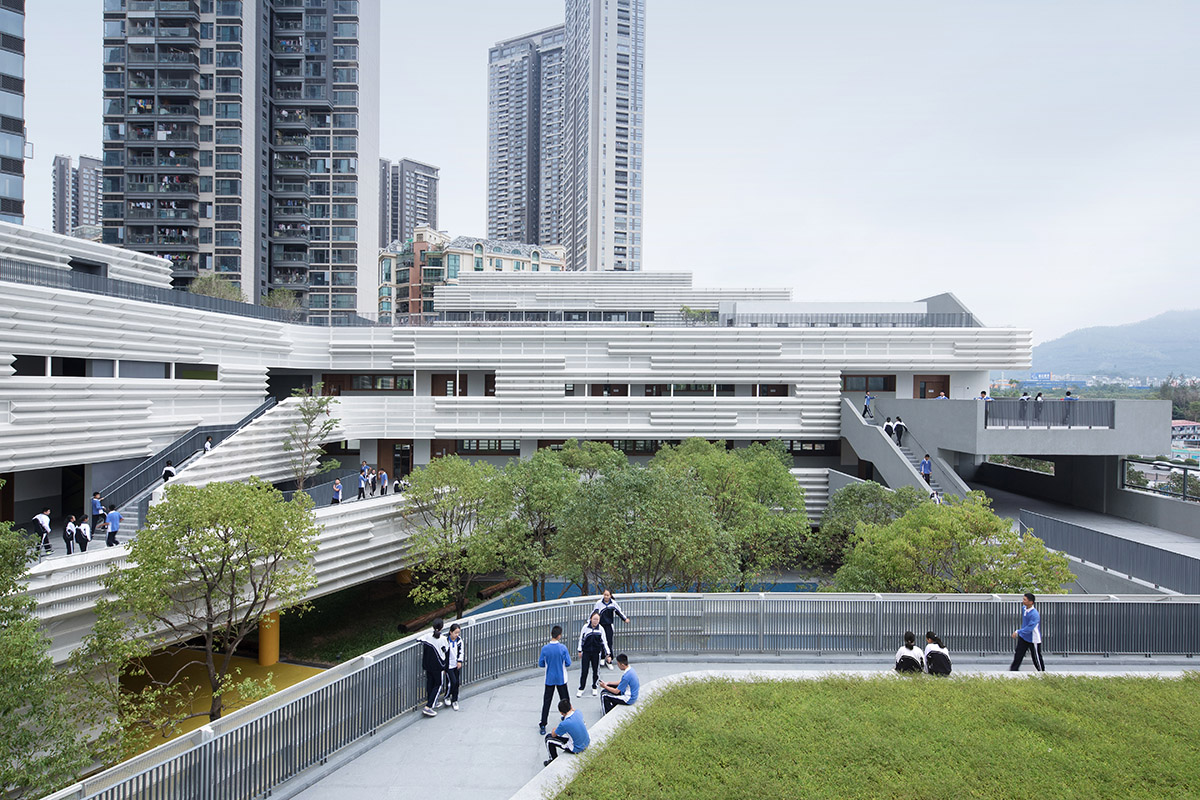
New York-based architecture practice Studio Link-Arc has built a foreign language school in Shenzhen, featuring staggered volumes to create an "urban garden" and challenge to the traditional school typology.
Named Shenzhen Nanshan Foreign Language School (NFLS), the 54,200-square-metre elementary and middle school campus includes regular and special classrooms, a library, a gymnasium, an indoor swimming pool, an auditorium, and a faculty dormitory, as well as dining halls and dedicated playgrounds.
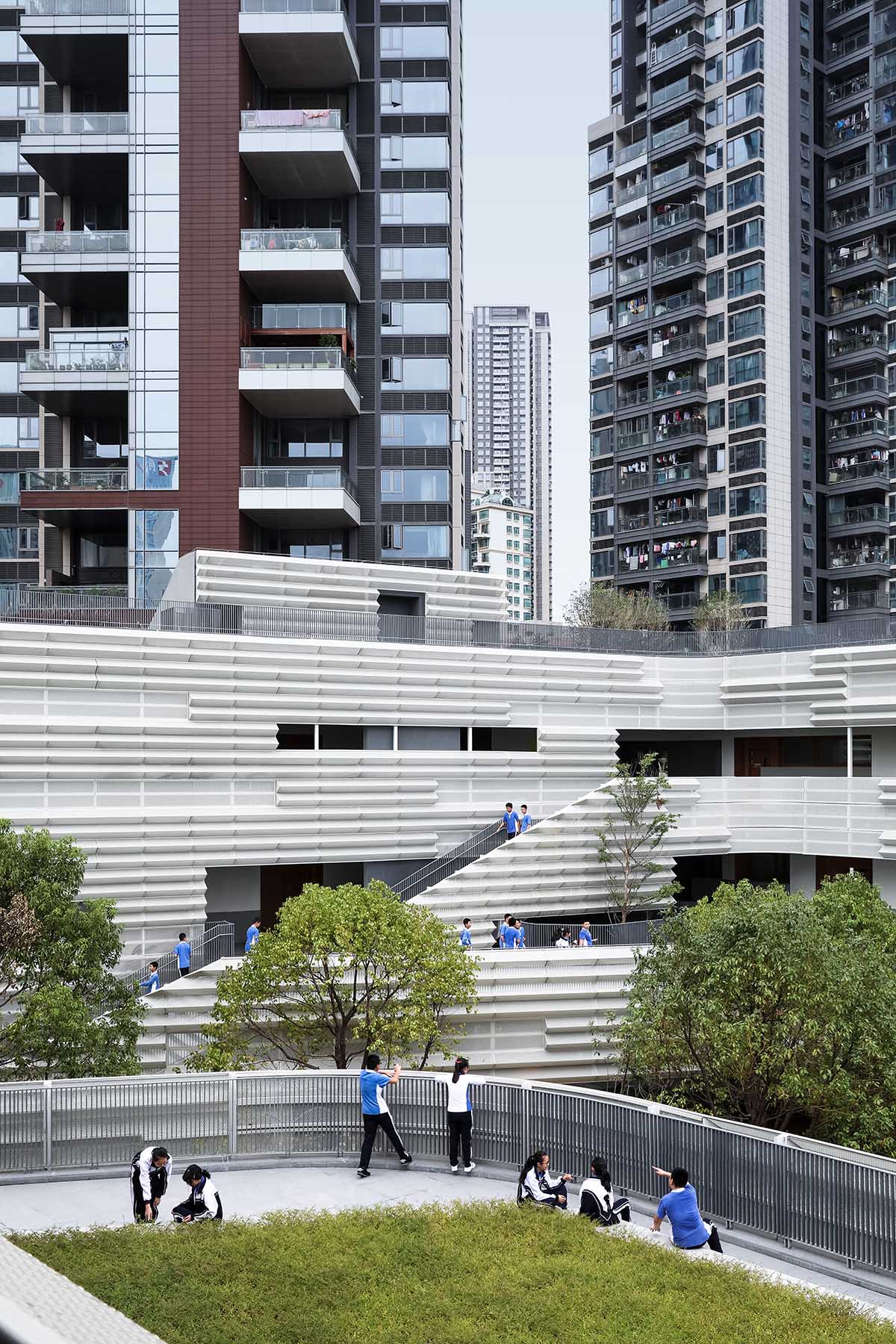
View from Terrace with Towers in the Background
Fragmented with open staircases, pathways, large terraces and different types of courtyards, the building emerges as "a horizontal and low-density school", creating a balance between closed and open spaces.
The NFLS campus, located in the Nanshan district of Shenzhen, China, was designed as the final piece of a decade-long redevelopment process that saw a condensed urban village transformed into a contemporary vertical city.
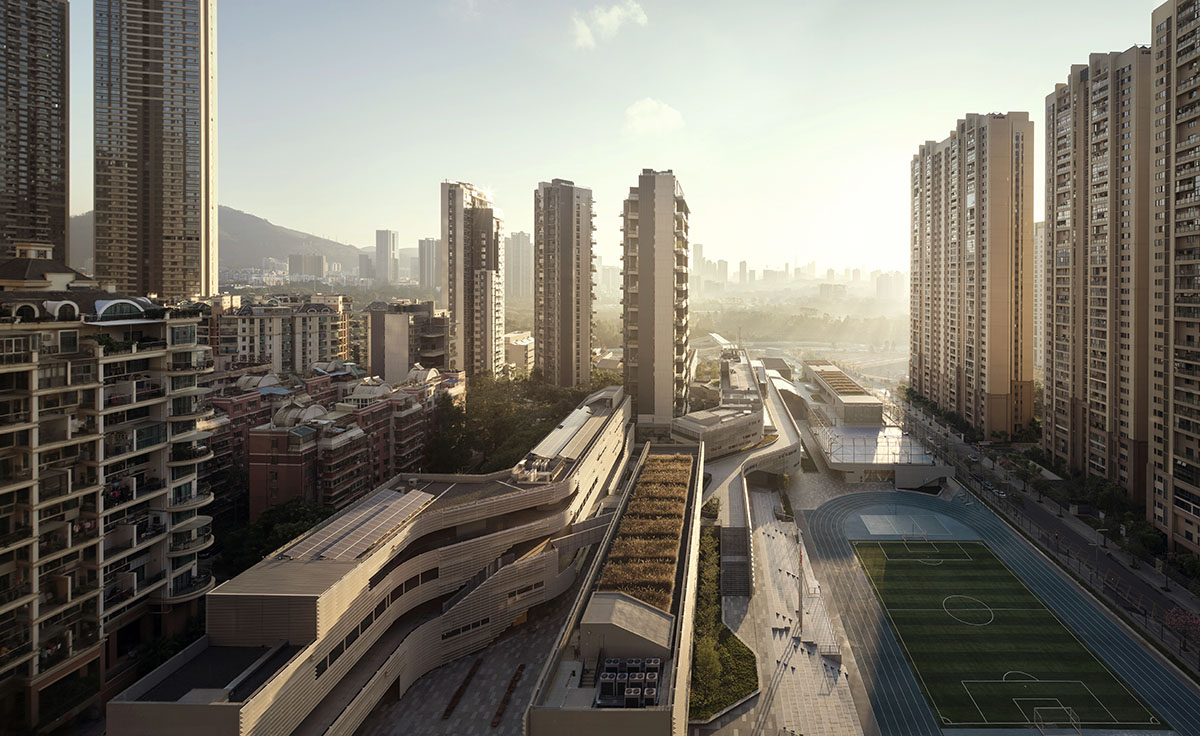
Aerial View
The school is surrounded by high-density residential development and commercial towers, according to studio, "the main challenge for the project was to regenerate an urban condition broken by contemporary development."
To create the NFLS campus, the studio devised three main strategies: Horizontal vs. Vertical, Interweaving the Garden and Thin Section/ Ecological Innovation.
Strategy I, called Horizontal vs. Vertical, represent connections with nature and is set to encourage creativity and promote new modes of thinking.
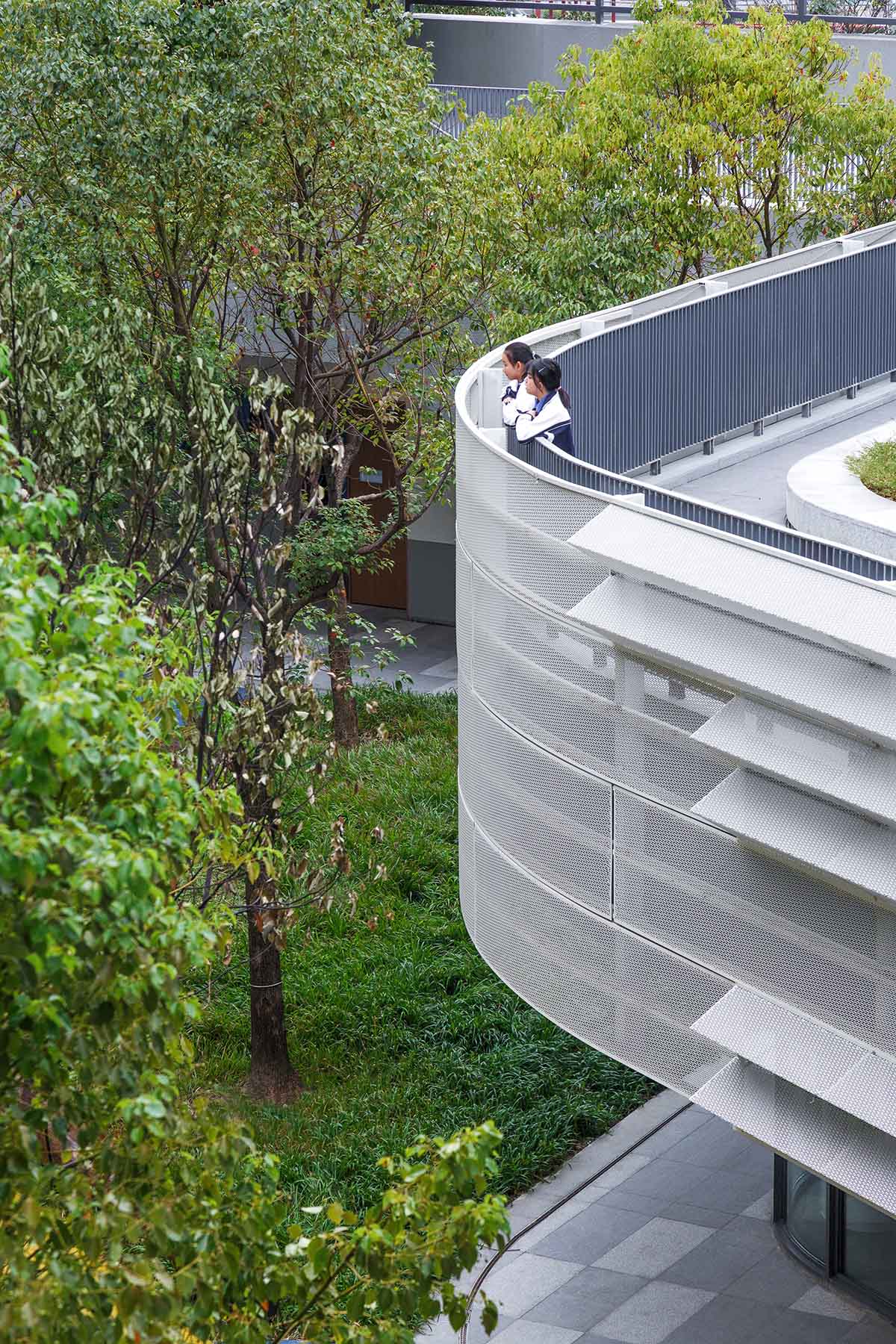
View of Elementary School Courtyard
As the studio explained, one of the main objectives of the project was to "create an intimate environment for teaching that would connect students to the natural world beyond the site." The building itself acts as a large-scale urban garden where children learn, play and feel free themselves.
"The dense verticality of the neighborhood surrounding the site made this objective even more pressing—the desire to create opportunities for students and teachers to interact with nature is a driving force behind the design, leading the design team to create a horizontal, low-density school," said the studio.
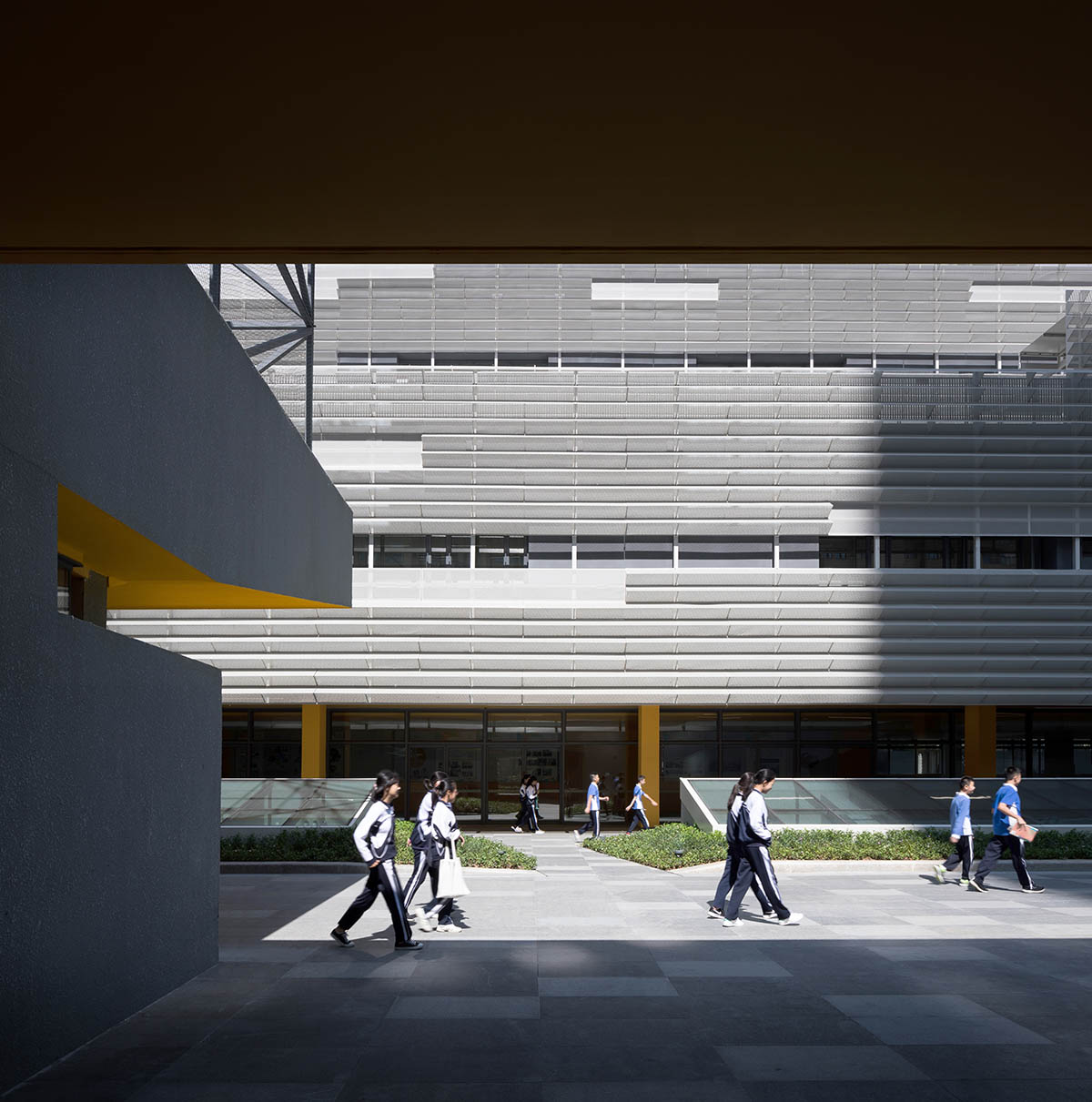
View of Elementary School Courtyard
The studio conceived the NFLS campus as a sweeping horizontal garden that contrasts the dense, vertical urban environment it serves. The school intentionally breaks the distinction between building and open space to create a linear hybrid that includes closed spaces, semi-enclosed zones, and open green spaces.
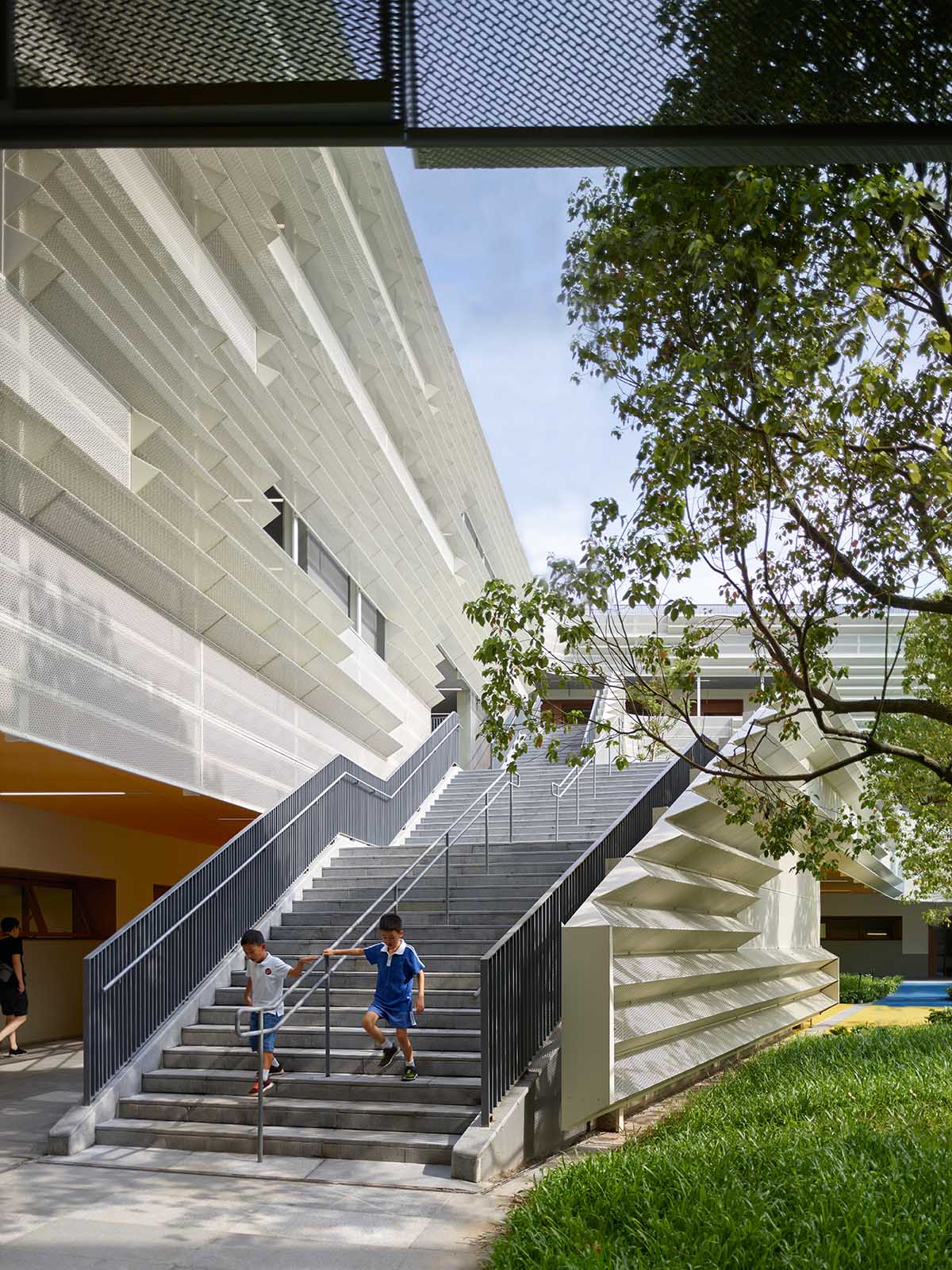
View of Elementary School Courtyard
Due to the low-rise composition, this allows the school to create an open oasis within a densely packed residential community that allows students to move seamlessly between indoors and outdoors.
"This enables the school to create vibrant campus life and to reestablish a connection to nature within the site," the studio added.
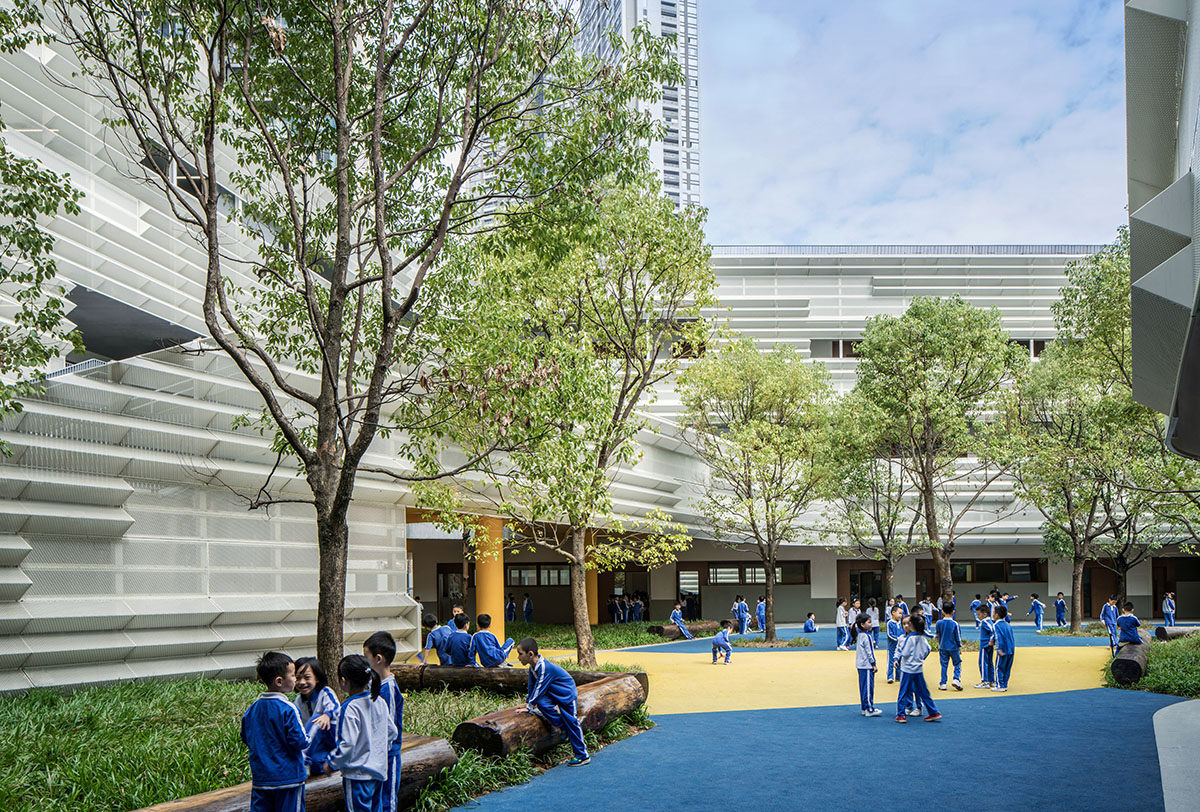
View of Elementary School Courtyard
Since the project site has a natural slope, the southeast corner is low and slopes upwards to the northwest. The scheme works within the existing topography.
Larger program volumes, such as gymnasium, pools, dining halls, and auditorium, are nestled into the slope. These volumes create terraced platforms above which form a new ground plane dedicated to teaching spaces and play areas.
The studio stated that "this allows the teaching spaces to be arranged in a linear manner, without the need to develop the building vertically."
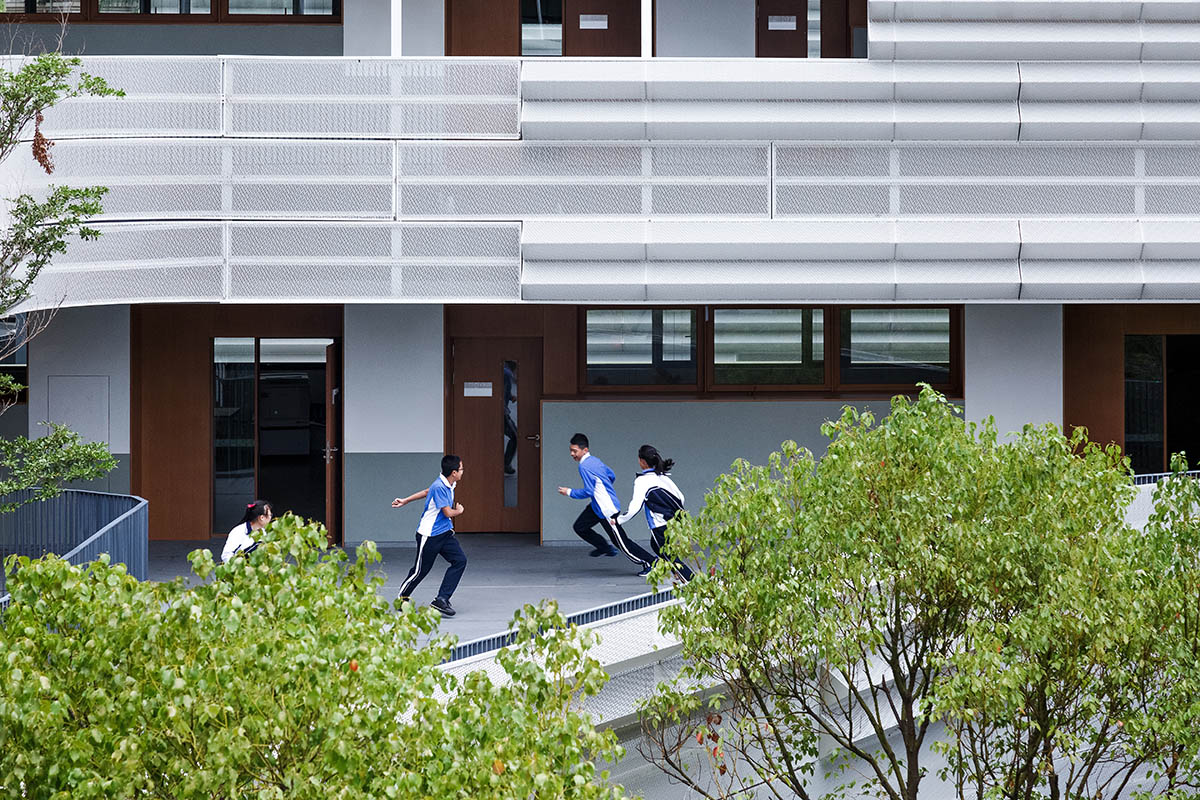
View of Elementary School Courtyard
Strategy II consists of "Interweaving the Garden" and as the studio added, the linear nature of the teaching volumes offers many architectural possibilities. These volumes meander across the site, splitting seamlessly to create six unique courtyards, serving as semi-private enclaves for teaching and play.
Each courtyard has a unique title: Entry Courtyard, Gathering Courtyard, Elementary School Courtyard, Middle School Courtyard, Sports Courtyard, and the Recreation Courtyard. Each open space is designed with a spatial theme and architectural strategy appropriate to its intended use.
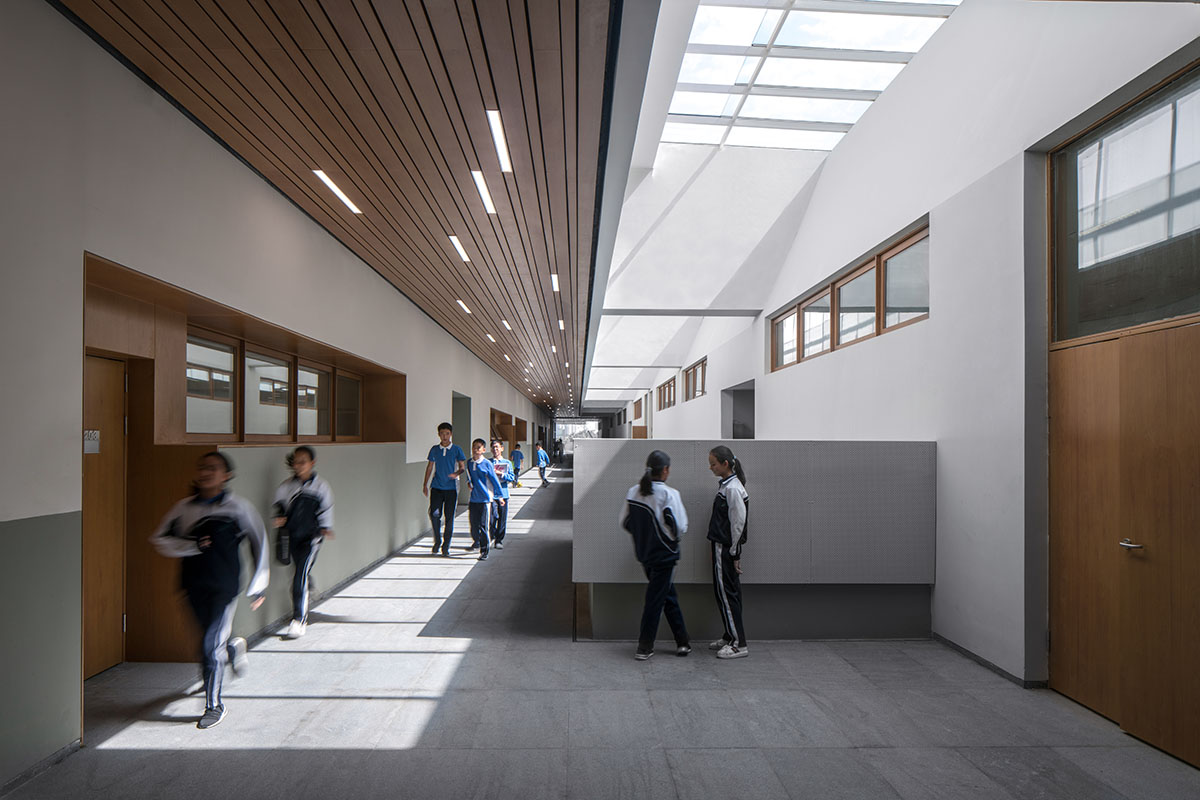
Interior View of the Corridor
The continuous ceiling above the ground floor is painted orange, unifying the open spaces of the campus and creating a sheltered public zone that provides access to every space in the project, thus responding to Shenzhen’s rainy climate.
In order to further connect the educational spaces to the outdoors, the linear classroom bars are staggered in sections. This creates exterior terraces that serve as main circulation corridors, and also ensures that all teaching spaces have access to sunlight and views.
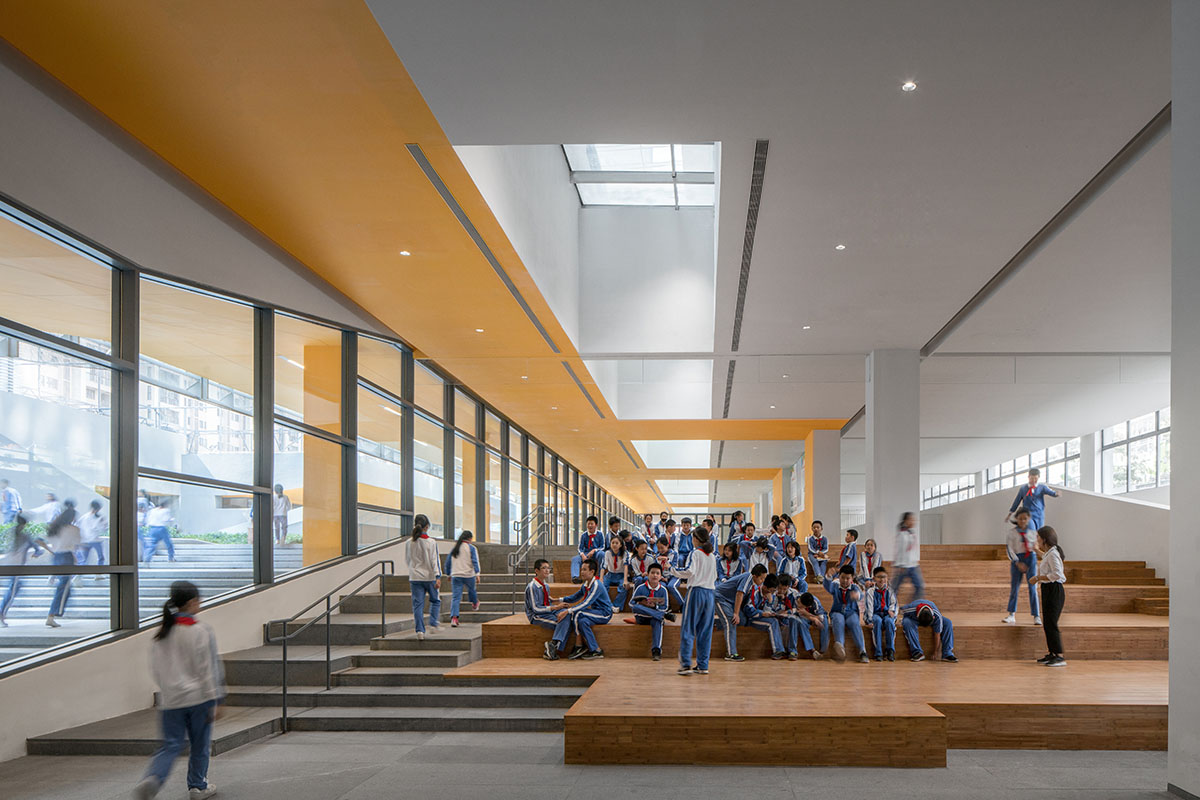
Interior View of the Public Stairs
The sinuous motion of the classroom ribbons generates a series of interconnected outdoor spaces that are tailored to meet the needs of each teaching area. The elongated courtyards of the specialized school and middle school turn into enclosed and protected courtyards for the primary school and library, or conversely, open into vast grounds used for physical activities.
Strategy III represents "Thin Section/ Ecological Innovation". The studio explained that the design of the NFLS campus intentionally challenging the conventional school design principles that typically divide a site into buildings and functional zones. Instead, the studio used a sectional organization that maximizes access to light and views for each classroom.
This strategy allows for multiple sectional variations and creates diverse spatial conditions for recreation, interaction, and education.
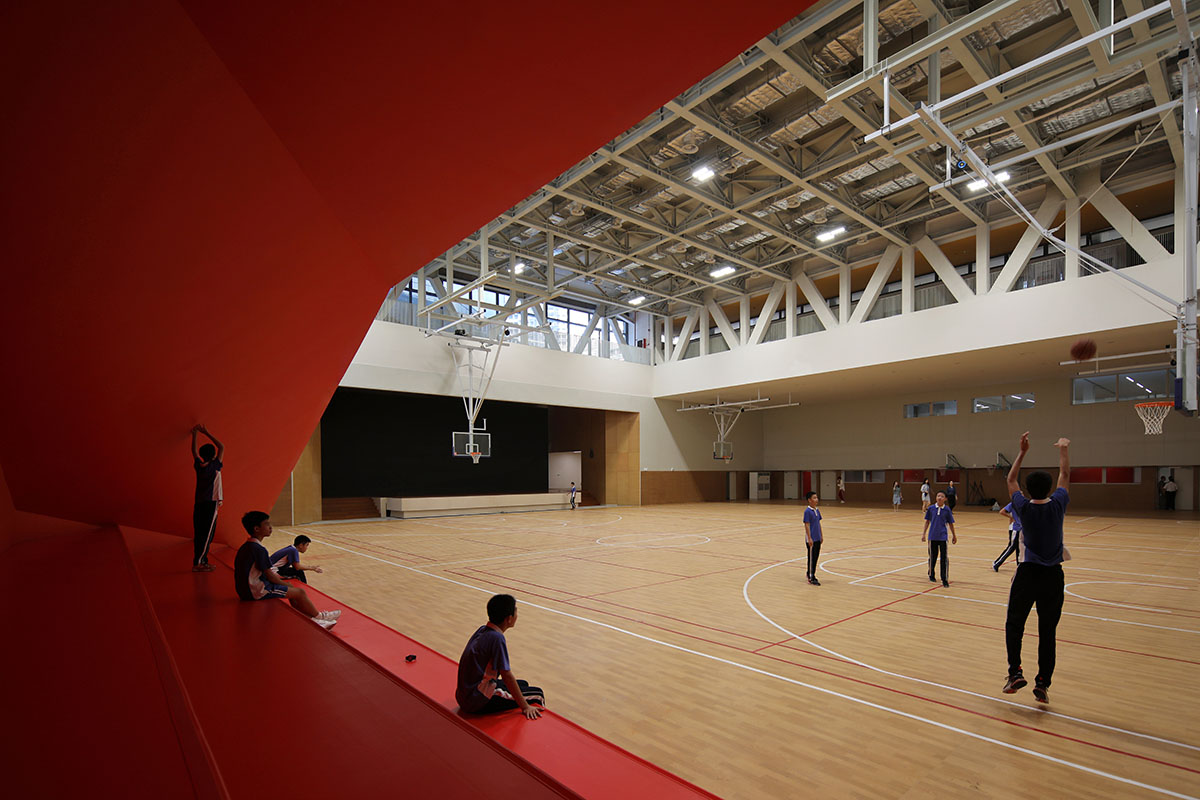
Interior View of Gym
The architects also followed sustainable strategies to adapt the building to Shenzhen’s warm, humid climate and conducted many design studies to optimize the overall volume.
Due to the staggered organization of the classroom bars, these volumes allow each room to access light, while the single-loaded classroom layout promotes natural ventilation.
The building’s facade treatment also serves to maximize the building’s climactic response. The northern facades are defined by high-performance glass and operable windows.
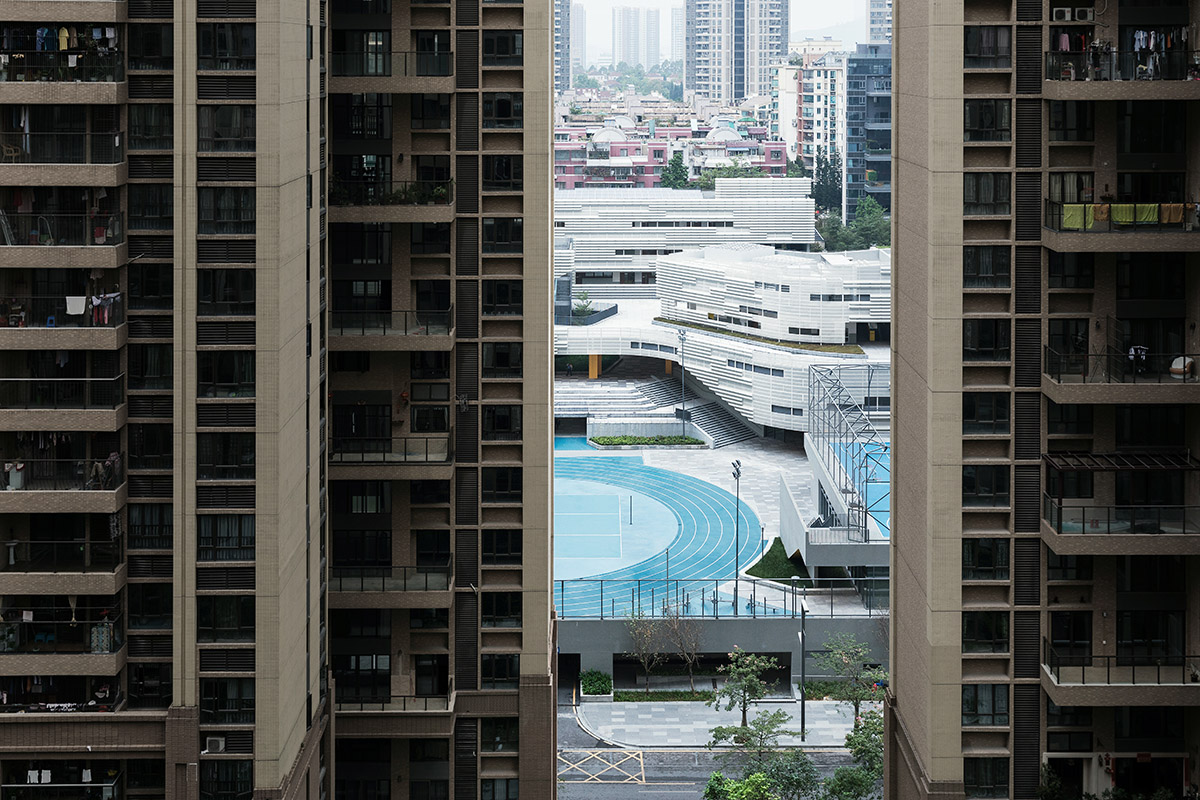
View Towards Campus from the Surrounding Residential Towers
Facades facing east feature architectural shading devices that minimize solar heat gain. Areas facing south and west incorporate shading elements and perforated aluminum screens.
To mitigate stormwater runoff, the building’s public spaces are paved with permeable bricks, while the roofs are planted with sedum (this has the additional effect of minimizing heat gain on the roof). Solar panels on the roof provide up to 2,000 MWh of clean energy annually. Thanks to these design and technological strategies, the NFLS project was the first compulsory school project in Southern China to receive GBEL Three Star Label certification.
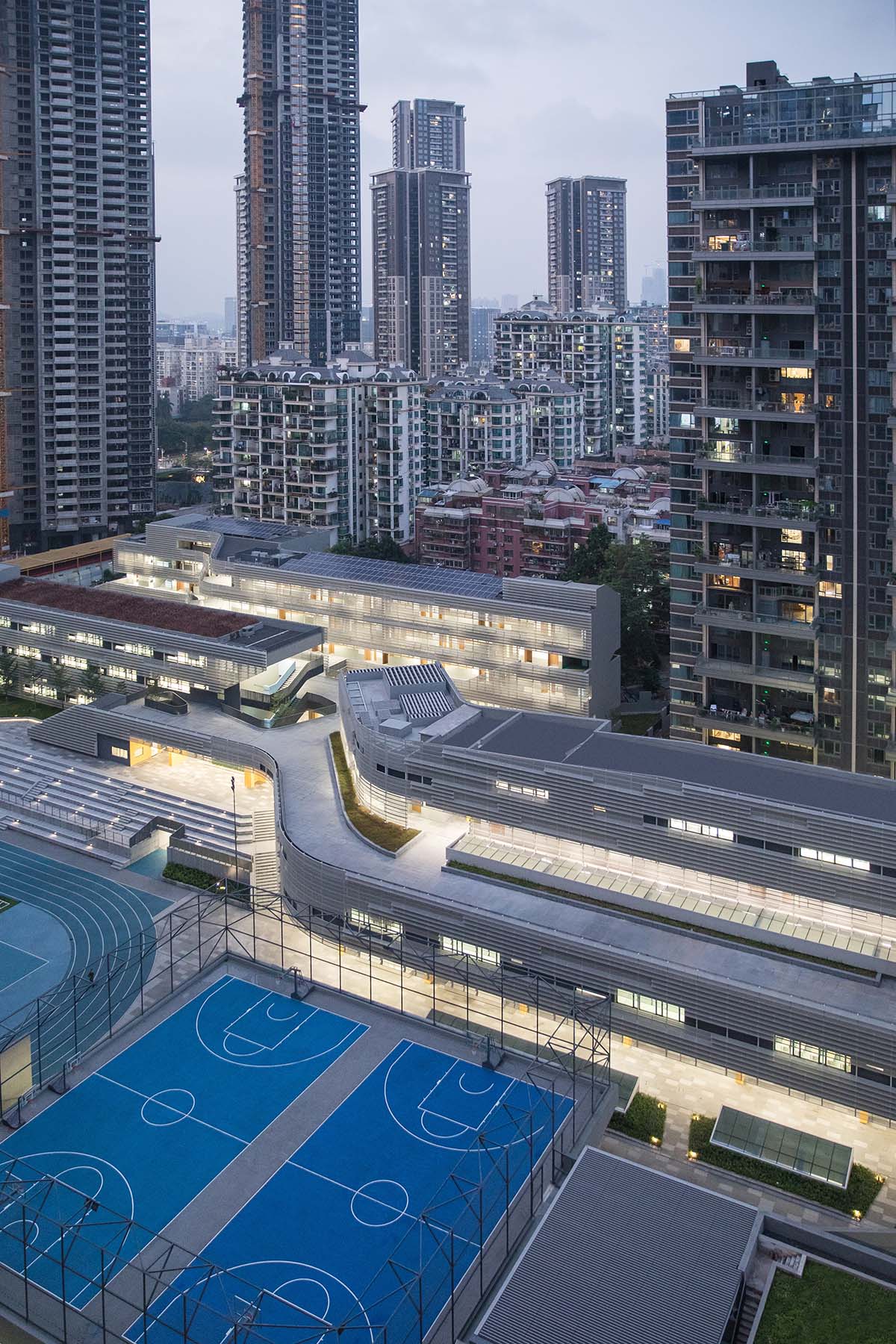
Aerial View at Dusk
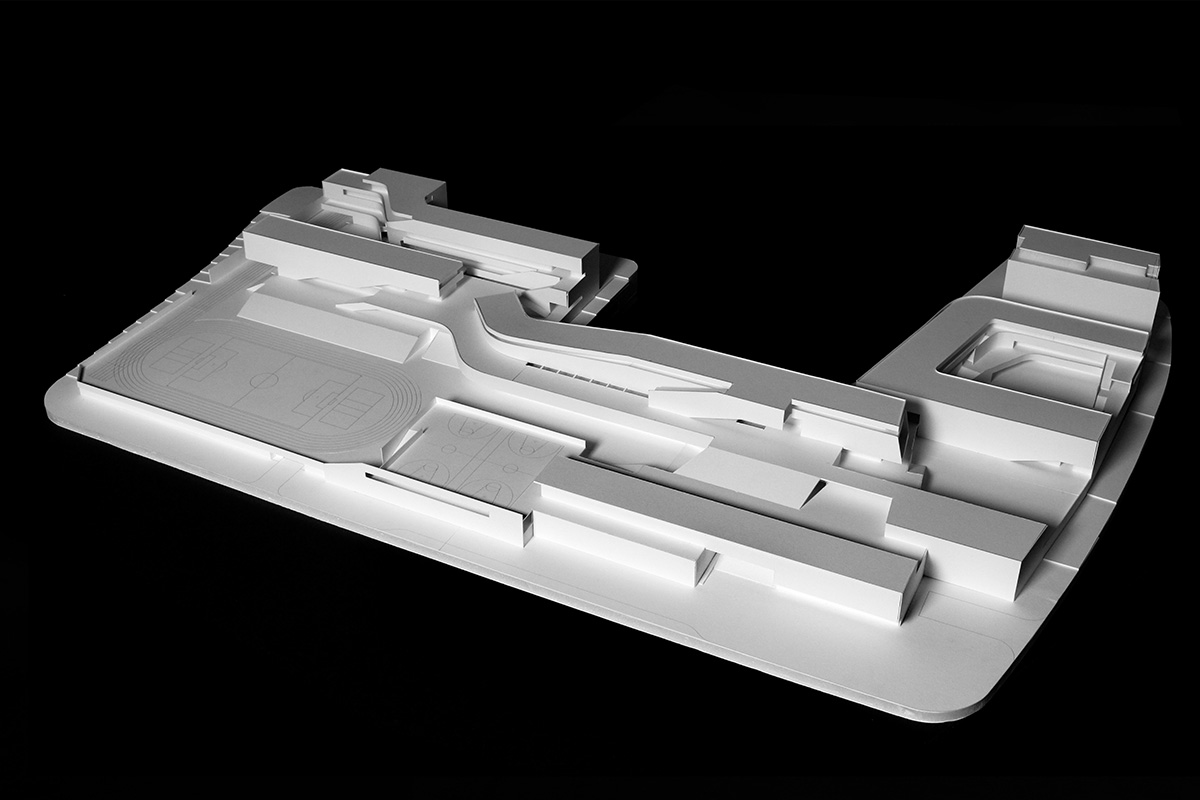
Overall Model
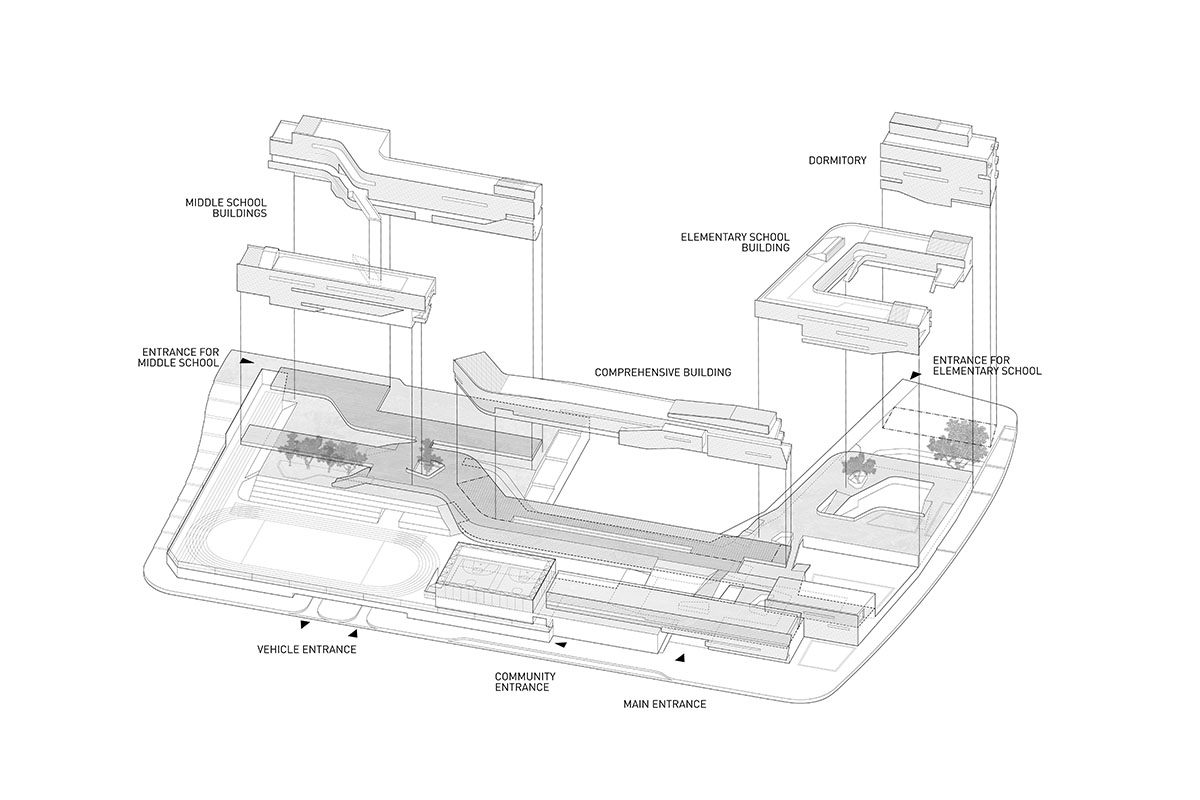
Axonometric Drawing
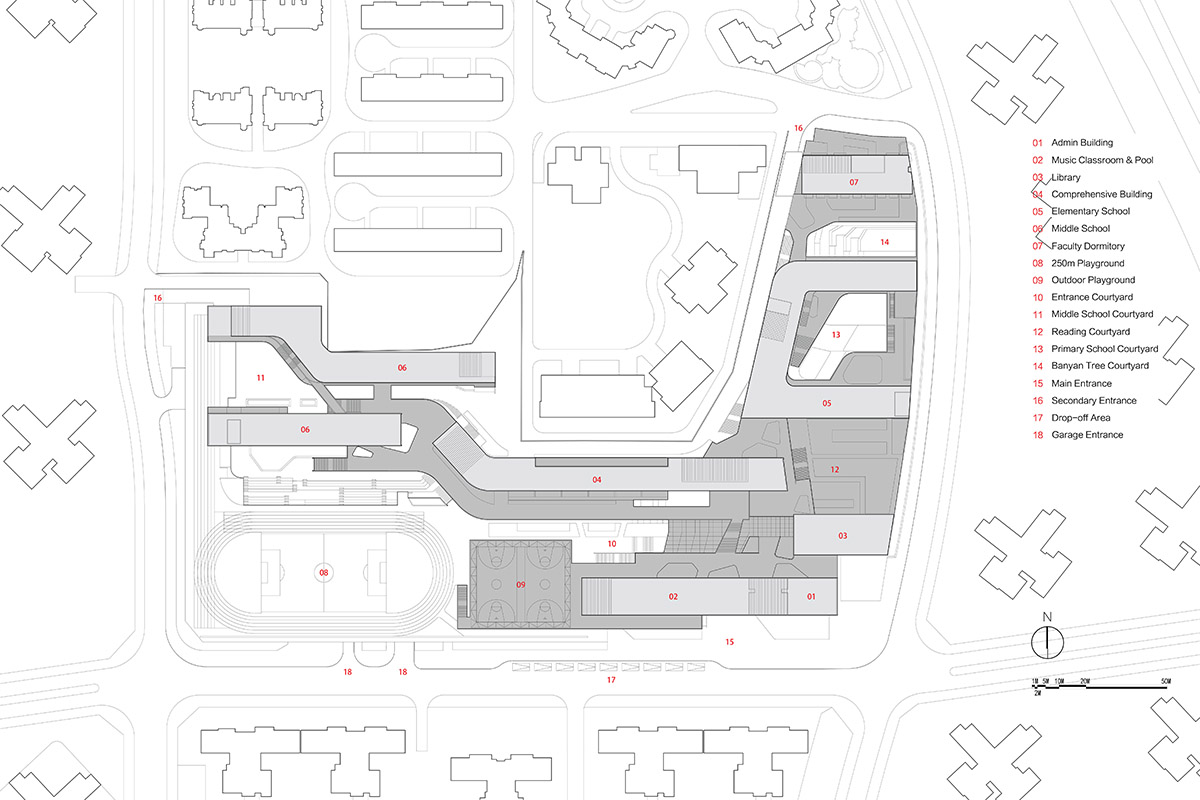
Site Plan
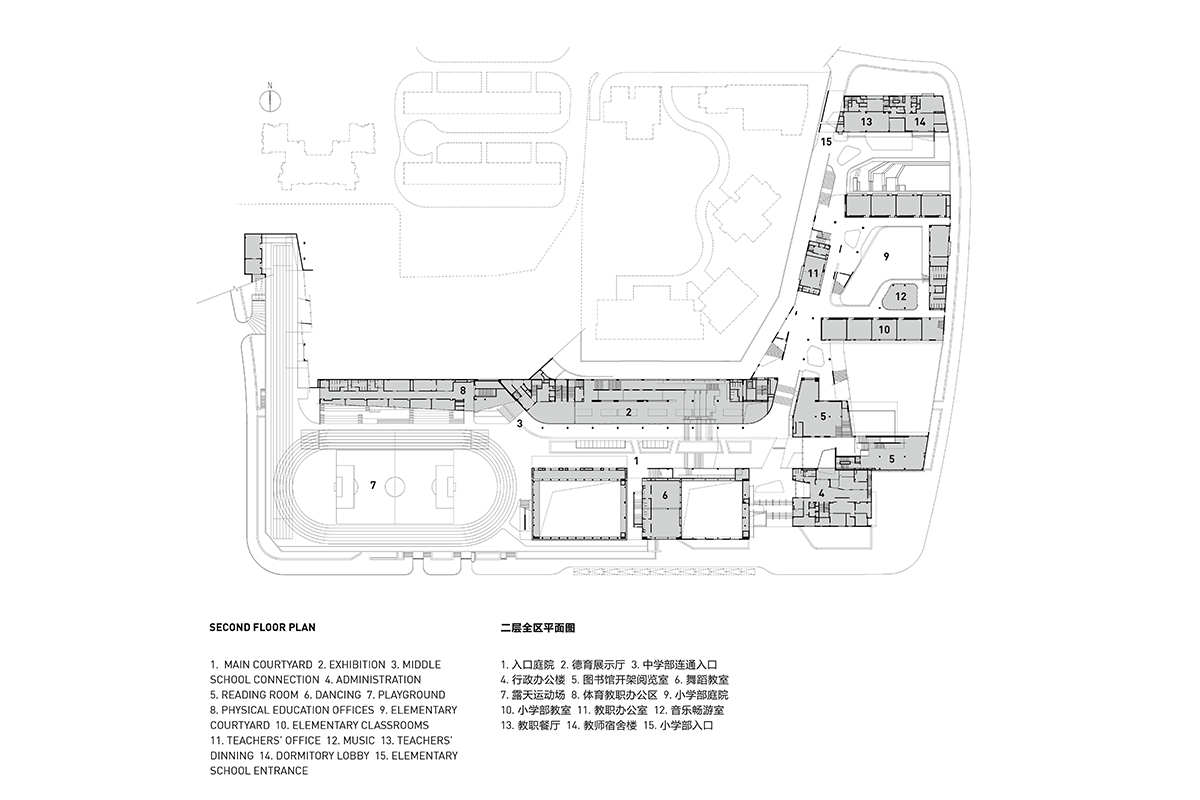
Level 2 Floor Plan
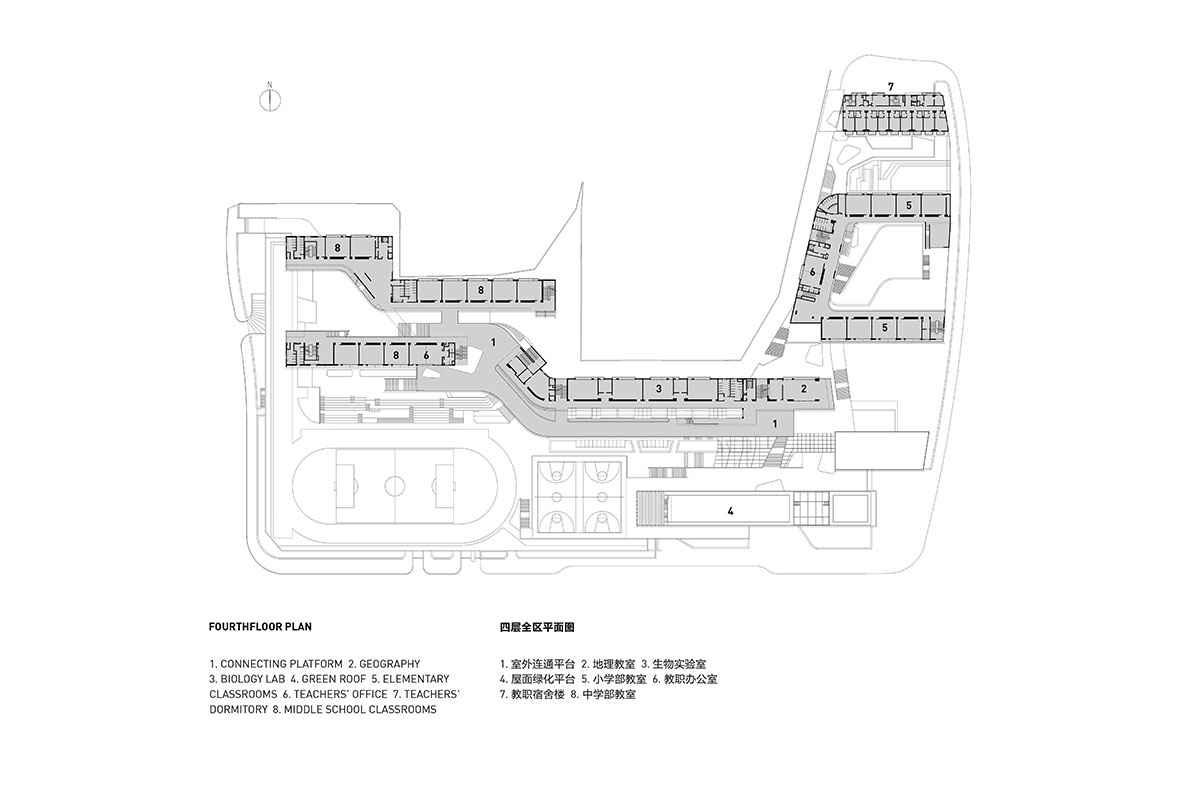
Level 4 Floor Plan
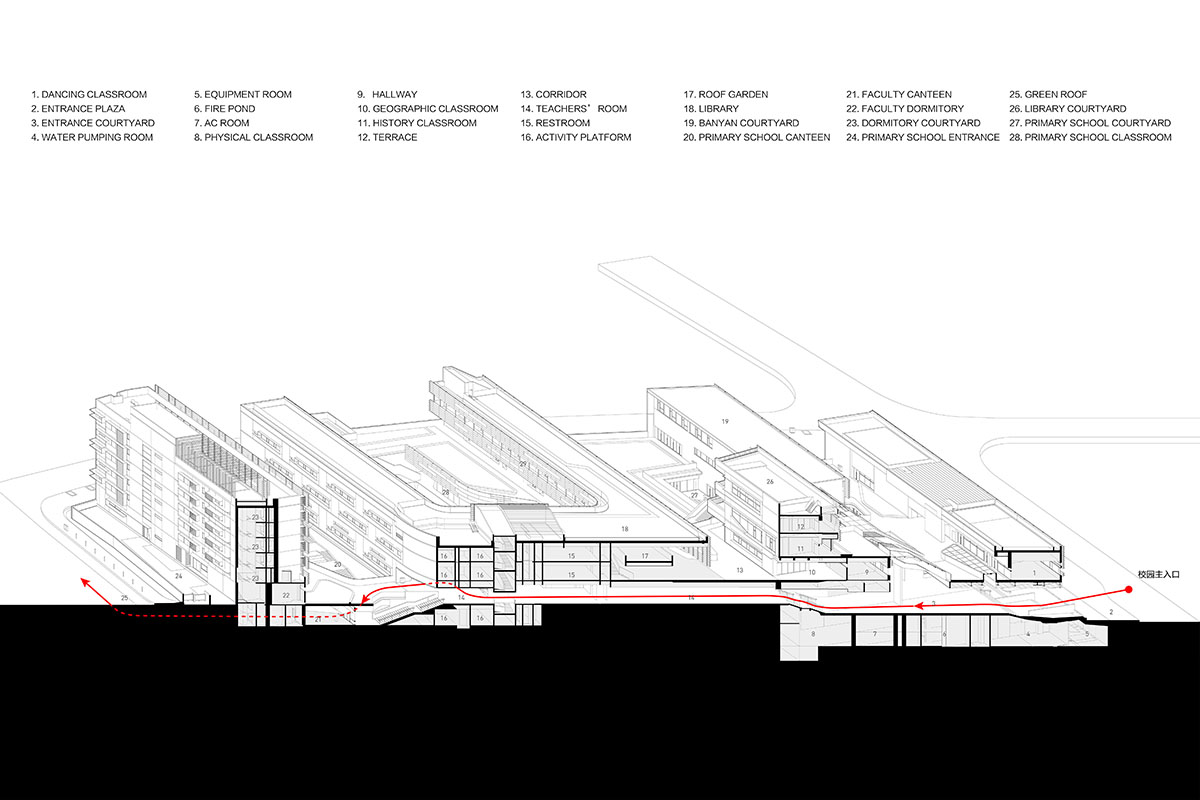
Long Section
Project facts
Project name: Shenzhen Nanshan Foreign Language School
Architects: Studio Link-Arc
Project Duration: 2014-2018
Building Area: 54,200 sqm
Client: China Resources Land, Ltd
Chief Architect: Yichen Lu
Chief Interior Architect: Yichen Lu
Project Manager: Razvan Voroneanu, Chunqi Fang, Shiqi Li, Wen Zhu
Project Team: Hyunjoo Lee, Dongyul Kim, Kenneth Namkung, Hyungsun Choi, Ching-Tsung Huang, Yihong Deng, Yoko Fujita, Simeng Qin, Qingyue Gao, Viviana Wang, Mariarosa Doardo, Jialin Yuan, Wenyun Qian, Xinhui Wen
Architect and Engineer of Record: Architectural Design and Research Institute of Guangdong Province
Interior Construction Document: Shenzhen Ruihe Decoration Engineering Co., Ltd.
Landscape Designer: Lab D+H
Landscape Architect of Record: Shenzhen Landscape
Structural Consultant: Yoshinori Nito Engineering & Design PC
Curtain Wall Consultant: EFC Engineering
Lighting Consultant: Ning Field Lighting Design
Green Building Consultant: Shenzhen Institute of Building Research
Construction Manager: Yuanda International Engineering Management Consult Co., LTD
General Contractor: China Resources Construction Corp.
All images © Shengliang Su
All drawings and model © Studio Link-Arc.
> via Studio Link-Arc
